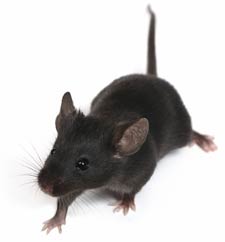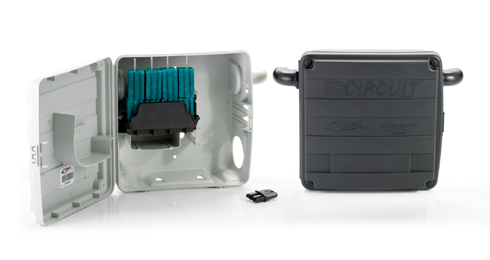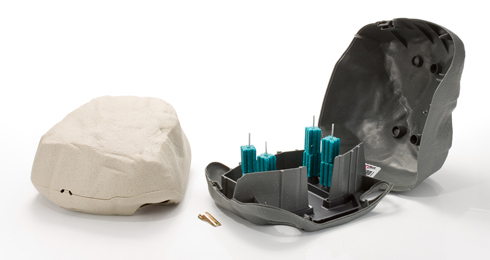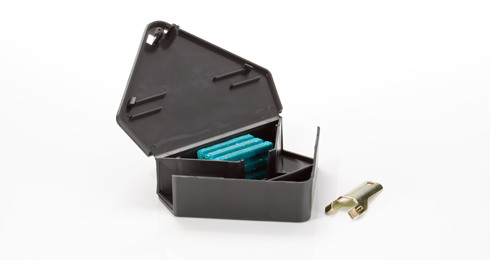Rodents
With the exception of man, the most abundant and successful animals on earth today are the commensal rats and mice. They have achieved this status with the inadvertent help of man himself. Rats and mice have utilized mans transport and trade routes to spread throughout the world and colonize every continent on earth with the exception of Antarctica. Commensal means literally “eating at the same table”. Commensal rodents are therefore those rodents that live and survive at mans expense, eating his food and damaging his possessions. They are considered pests for three main reasons, loss of food, damage to structures, and disease potential. Foodstuff losses occur in both food production and storage by being physically eaten or contaminated by rodent hairs, droppings and urine. Structures can be damaged by rodent burrowing and gnawing. Building foundations may be undermined, roads may settle from burrowing activity along with railway tracks and other structures. Commensal rodents can carry and transmit a number of diseases to man. Diseases include Plague, Murine typhus, Leptospirosis, Salmonellosis, Trichinosis and Rat bite fever. Three species of commensal rodents are distributed worldwide. They are
1 - Rattus rattus or the roof or black rat.
2 - Rattus norvegicus or the Norway or brown rat.
3 - Mus musculus or the house mouse.
Other important species of commensal rodents exist but are confined to more localized areas throughout the world. Various native species of rodents are also found throughout the world but cause little concern when compared to the three main pest species mentioned. There are approx 60 native species of rodents to Australia.
Rattus rattus
Weight - 80 to 340gms.
Head and body length - 165 to 245mm.
Pointed nose with slender body. Tail is longer than body and head and dark in colour and hairless.
Length 18 - 245mm.
Large, prominent ears, hairless, stand well out from fur.
Brownish grey to black fur on back. belly may be white, grey or grey to black.
Life span - 9 to 12 months.
Agile climber, can climb trees, conduits and vertical structures with ease, often lives off the ground.
Frequently found in domestic buildings where the homeowner may be alerted to its presence by scratching noises in the roof.
Can swim
Gestation period - 20 to 22 days.
Weaning - aprrox 20 days old.
5 - 10 young per litter with up to 6 litters per year.
Sexual maturity in females in approx 3 months.
This species is believed to have arrived in Australia with the first settlers and has spread throughout Australia though is not believed to have colonized the arid desert areas of inland Australia. Commonly seen around residbut cause little concern when compared to the three main pest species mentioned. There are approx 60 native species of rodents to Australia. ential areas, farms, stables, waste facillities, food warehouses and older parts of the cities. Prefers food of fruit or vegetable origin but will consume virtually any human food. Because of its habit of consuming fruits and vegetables its need for water is reduced.
Rattus norvegicus
Weight - 200 to 400gms.
Head and body length - 180 to 260mm.
Blunt nose, heavy stocky body. Tail is shorter than head and body, dark above and lighter below with short stiff hairs.
Length 150 - 215mm.
Ears relatively small, close set, appear half buried in fur.
Brownish grey on back, grey on belly.
Life span - 9 to 12 months.
Do not usually climb.
Usually burrows into ground for nesting.
Burrows can be large and elaborate.
Excellent swimmer.
Gestation period - 22 to 24 days.
Weaning - approx approx 20 to 28 days.
7 - 10 young per litter with up to 6 litters per year.
Sexual maturity in females in approx 3 months.
The dominant species in both Europe and America where it is known as the common rat. Also believed to have arrived in Australia with early settlers. Commonly found around coastal cities, ports and farms such as poultry farms. Norway rats will eat any human foods available but prefer garbage, cereals, meat and fish. They also need regular access to water. Insert pictures 3 and 4 of Norway rats p>
Mus musculus
Weight - 10 to 20gms.
Head and body length - 5 to 10cm.
Pointed nose, slender body.
Tail equal to or a little longer than head and body, dark in colour and hairless.

Length 7 - 11 cm.
Ears are large and prominent. Grey to brown in colour.
Life span - 9 to 12 months.
Agile climber.
Can live above ground or in burrows.
Frequently found in domestic and commercial situations.
Can swim.
Gestation period - 19 to 21 days.
Weaning - approx 25 days.
5 - 6 young per litter with up between 6 to 10 litters per year.
Sexual maturity in females in approx 6 to 8 weeks.
Considered to be one of the worlds most successful living mammals. Commonly found both indoors and outside commonly coming inside to avoid cold weather. Due their small size can enter a building via very small holes or gaps. Will nest inside a building in roof voids, wall voids, furniture, cupboards, pallets of stock, expansion gaps and stored items to name but a few. Will eat most human foods.
Domestic Rodent Control
An initial treatment will first involve knowing which rodents are causing trouble. A Q Pest technician will determine whether it is rats or mice. This can be determined by evidence of live or dead rodents such as droppings, tracks gnaw marks, burrows, nests and your own observations around your property. The technician will then determine the best course of action. This is done by taking into account factors such as building style and design, vegetation against buildings, pets, the presence of any small children or the presence of native animals such as possums to name a few. Q Pest commonly use baits for our rodent treatments. These baits can be placed to the interior,roof void or exterior as the situation warrants and allows. Lockable stations can be used where pets or small children are present for safety and baits to the roof area can be wired in place so as rodents cannot carry them outside where they may be found by pets or children. Snap traps can also be used where neccessary such as in poultry houses within a lockable station for extra safety and security. Your payment invoice will detail what products have been used and where for your information.
Give Q Pest a call today on 1300 773781 and let us help.
Domestic Rodent Control An initial treatment will first involve knowing which rodents are causing trouble. A Q Pest technician will determine whether it is rats or mice. This can be determined by evidence of live or dead rodents such as droppings, tracks gnaw marks, burrows, nests and your own observations around your property. The technician will then determine the best course of action. This is done by taking into account factors such as building style and design, vegetation against buildings, pets, the presence of any small children or the presence of native animals such as possums to name a few. Q Pest commonly use baits for our rodent treatments. These baits can be placed to the interior,roof void or exterior as the situation warrants and allows. Lockable stations can be used where pets or small children are present for safety and baits to the roof area can be wired in place so as rodents cannot carry them outside where they may be found by pets or children. Snap traps can also be used where neccessary such as in poultry houses within a lockable station for extra safety and security. Your payment invoice will detail what products have been used and where for your information. Give Q Pest a call today on 1300 773781 and let us help.
Commercial Rodent Control
Rodents consume around 10% of their body weight a day but destroy or contaminate much, much, more. Any foodstuffs, packets, cartons or bags damaged must be discarded at a direct loss to the business owner. The sight of live rodents or their evidence within a business establishment can cause irrepairable damage to a businesses brand. Q Pest will devise and implement a Rodent Management Programme that will allow your business or facillity to continue operating uninterupted without disruption or loss of revenue. Initially a thorough inspection will be provided . This will allow us to determine whether any current activity exists and if so which species. Any environmental conditions that may need to be addressed eg overgrown or unkept gardens around buildings, holes or gaps allowing for rodent entry, incorrect storage of rubbish etc. Once this site inspection is complete we will determine which stations or products will be the most effective and submit a treatment proposal.
In commercial situations Q Pest will use only tamper resistant lockable bait stations.These stations can be wired, bolted or weighed down to prevent loss or theft and can only be opened with the use of a special key. In sensitive areas or accounts Q Pest can use stations that look like a rock such as the Bell Protecta EVO Landscape which can be placed unobtrusively in a garden bed or the Bell Protecta Evo Circuit which is designed to look like an electrical box with connectors that slide into the sides, perfect where discretion is essential. To see how the Protecta EVO Circuit worked for the city of Lyons in France click here




Q Pest take great pride in the service we provide and the reputation we have built for providing a quality service and a trusted reputation. Your first step to protecting your business reputation, brand and revenue is to give Q Pest a call today on 1300 773781.



